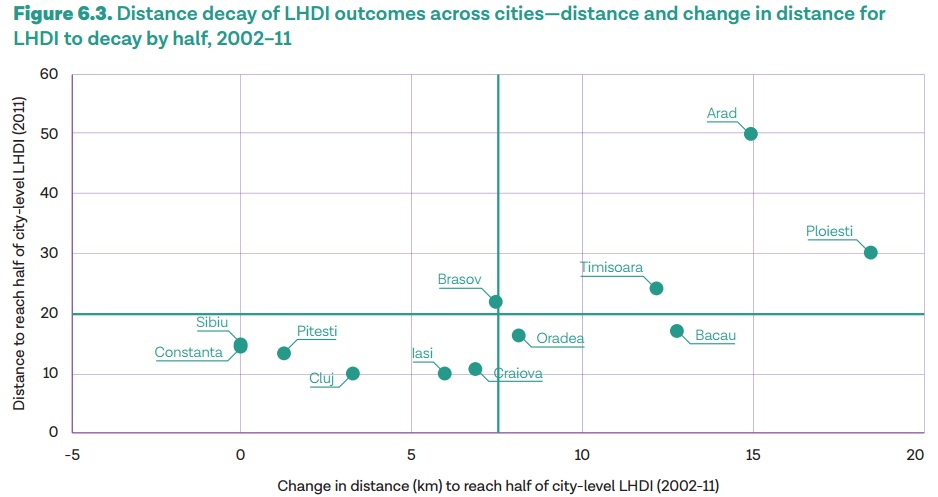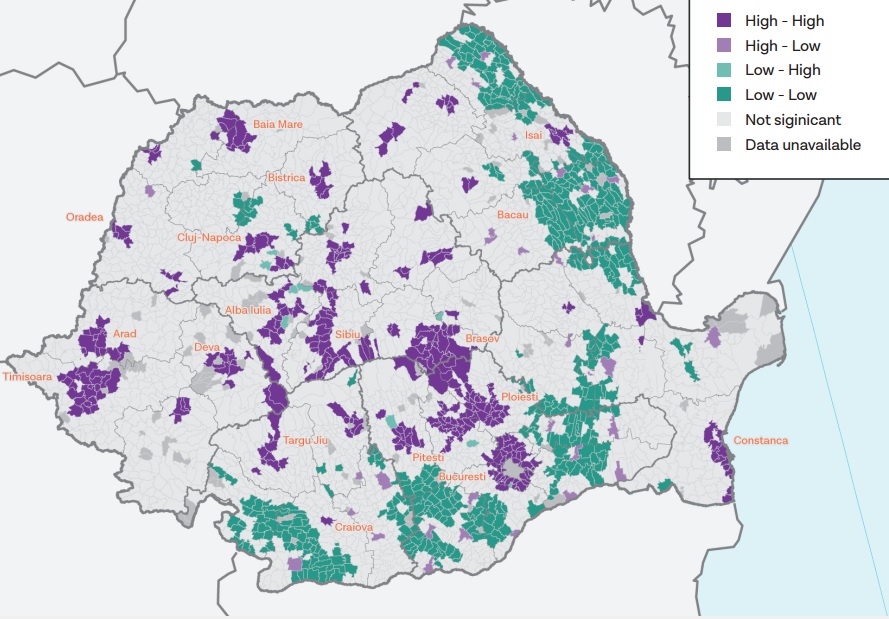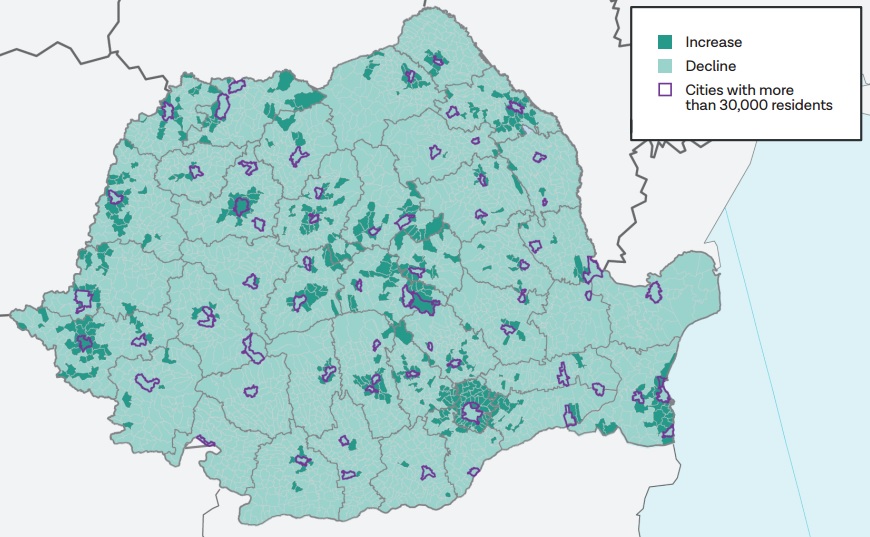:quality(80)/business-review.eu/wp-content/uploads/2018/07/dreamstime_m_39342317.jpg)
Romania’s development depends on its major cities, which are far ahead of the rest of the country in terms of human development, and their improved economic and social outcomes spill over to the hinterland by 8 kilometers over a decade, according to a recent study released by the World Bank.
“An analysis of human development outcomes in Romania—the Local Human Development Index (LHDI) -show that cities there are far ahead of the rest of the country in human development outcomes, and those municipalities that are improving their LHDI tend to be the ones surrounding urban areas. The findings also show that while variations across locations are declining slightly over time, the biggest convergence is happening within the group of urban locations,” the study “Rethinking lagging regions” says.
But there are also significant differences across Romanian cities in their spillover effects.
“Analyzing the speed of decay in the LHDI outcomes as we move outside cities, shows that the “half-life” of LHDI (i.e., how far from the functional urban area one needs to go before the LHDI value in the area falls to 50 percent of the value in the functional urban area) ranges from as little as 10 kilometers in Cluj to more than 50 kilometers in Arad,” the experts point out.
According to the study, the impact appears to decay on average at 30 kilometers across all cities in Romania, “which suggests a relatively limited reach into the hinterland”.
“While some cities experienced no change in spillover over time (e.g., Constanta and Sibiu), on average the spillover from cities expanded by 8 kilometers over the decade,” the study indicates.

But cities function on different patterns in Romania. Timisoara and Arad have expanding suburbanization and strong spatial spillovers of LHDI, while Cluj and Iași have compact core cities but limited spillovers to the hinterland.
“The reality is that they are shaped to a large degree by the nature of the structural transformations happening in their respective regions – in Cluj and Iași, toward high-value services that cluster in urban areas; and in Timisoara and Arad, toward manufacturing that locates along transportation corridors in peri-urban areas,” the experts say.
Internal migration
Evidence is limited to explain the scale and nature of the spillover effect from cities in Romania. The broad channels are migration, commuting (extending the periphery), and regional supply chain and service delivery linkages.
“From an interpersonal rather than a spatial perspective, cities have positive spillover effects simply from absorbing economic migrants, raising their productivity, and improving their human development outcomes,” the study point out.
This is happening on a large scale in Romania and elsewhere in Europe but much of this migration is also coming from the local catchment area.
“Between 2002 and 2011, 1.1 million Romanians moved to the functional urban areas of Bucharest and the 40 county capitals. Tis move implied for these people not only an increase in standard of living (the LHDI for these functional urban areas is well above the regional LHDI) but also an increase in productivity,” the World Bank indicates.

Suburbanization
Migrants both benefit from and reinforce agglomeration economies, and the easier it is for people to migrate to cities – by encouraging private sector development, developing connective infrastructure, or promoting healthy land and housing markets -, the better the regional outcomes, according to the study.
“This issue of congestion effects links to the broader trend of commuting and suburbanization. Analysis of secondary city development in Poland and Romania – as well as in Greece, Italy, Portugal, and Spain – shows that much of the growth is coming not so much from migration but rather from significantly increased commuting,” the experts indicate.
In many secondary cities in Romania, functional urban areas (FUA) are growing rapidly, primarily as a result of suburbanization.

“Whether the growth of the scope of cities through growing suburbs is a sign of positive or problematic dynamics is a critical question for considering the effectiveness of secondary cities for driving regional growth and having positive spillovers into the hinterlands,” the experts estimate.
If this trend is happening simply because of rapid growth and opportunities in functional urban areas pulling workers from the previous hinterland into the orbit of the city, it is largely a good thing, the study say.
“However, if it is happening because distortions in land use or other factors are raising congestion costs (high housing costs, diseconomies from crime or pollution, etc.), it will make continued rapid productivity growth unsustainable,” the experts warn.



:quality(80)/business-review.eu/wp-content/uploads/2024/07/SNIPPETS-REALTY-2024_ionut-urecheatu.png)



:quality(80)/business-review.eu/wp-content/uploads/2024/06/22C0420_006.jpg)

:quality(80)/business-review.eu/wp-content/uploads/2024/06/COVER-1-4.jpg)



:quality(80)/business-review.eu/wp-content/uploads/2024/06/br-june-2.jpg)
:quality(50)/business-review.eu/wp-content/uploads/2024/07/VGP-Park-Timisoara_-8thbuilding_iulie-24.jpg)
:quality(50)/business-review.eu/wp-content/uploads/2024/07/America-House-Offices-Bucharest-Fortim-Trusted-Advisors.jpg)
:quality(50)/business-review.eu/wp-content/uploads/2024/07/BeFunky-collage-33-scaled.jpg)